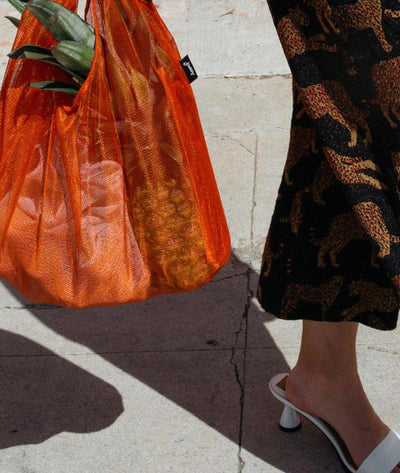Our Neighbors Are in Trouble: The Rising Levels of Violence Against Women in Juárez

Sometimes, it feels like the world is on fire. (And all too often, it actually is.) In our interconnected existence, we’ve grown accustomed to hearing about crisis after crisis, and as empathetic and engaged individuals, we feel we’re pretty well informed. But every so often, we all have that moment where we find ourselves saying, “wait – how are we not talking about this?!”
For Junes founder, Janean Mann, that moment was a visit to Ciudad Juárez, Mexico. She had made the quick trip over the border from her hometown of El Paso looking to source fabric for a line of reusable bags. But what she found was something horrific: rows and rows of fliers, pleading for information on women who had disappeared. It didn’t take long for her to discover the full extent of the tragedy – that women were going missing at alarming rates, and the outcome was often brutal for those who were found. A true crisis of violence and murder perpetrated on women was unfolding, mere miles from her home, but in a drastically different world.

Femicide in Mexico
According to the World Health Organization (WHO) definition, “femicide is generally understood to involve intentional murder of women because they are women, but broader definitions include any killings of women or girls.” And most femicide crimes are committed by “partners or ex-partners, and involve ongoing abuse in the home, threats or intimidation, sexual violence or situations where women have less power or fewer resources than their partner.”
At least a thousand women have been murdered annually in Mexico since 2010, with cases of femicide in the country increasing by 137% in the last five years. And it’s getting worse. Between January and June of 2019, 1,774 women were officially registered as murdered — that’s an average of 10 women per day. Not dying. Murdered. And unfortunately, those are only cases for which bodies have been found and gender is identifiable. The true extent of the problem is likely much worse.
The Crisis in Juárez
Situated on the Rio Grande, Ciudad Juárez lies just over the border from our Junes office in El Paso, TX. It is the largest city in the Mexican state of Chihuahua, rife with industrial opportunity but also cursed by its proximity to America and its drug addiction. As of 2019, Juárez had the second highest homicide rate in the world and remains one of Mexico’s most dangerous cities for women.
The crisis first came to light in the early 1990s, drawing international attention to the brutal violence being perpetrated against women. Unfortunately, not much progress has been made in the last three decades. Femicide rates have gone up, and to this day, the majority of the cases remain unsolved and offenders remain unpunished. Be it ineptitude or corruption (both are suspected by activists), prosecution levels are low, and the friends and family of missing women are left with nothing but unanswered questions – often met with indifference from authorities.

A Pandemic Within the Pandemic
Violence against women has escalated during the COVID-19 pandemic, around the world and particularly in Latin America, where femicide rates were already high. In April 2020, when the initial stay-at-home orders went into effect in Mexico, a record 267 murders of women were reported – the highest rate per month in the last five years. This figure was accompanied by record levels of emergency calls concerning violence against women - 26,171 in March alone. Fears that lockdown orders would put many women in danger were confirmed.
In a crisis where prosecution levels already infuriatingly low, law enforcement officials are visiting crime scenes and following up with reports less frequently due to isolation protocols. The posters concerning missing women are only growing in number, right along with the conditions creating the problem. Economic struggles exacerbate triggers – male breadwinners facing job loss may turn to negative coping methods (such as drugs and alcohol) known to increase the likelihood of violence, and the resulting lack of wealth and resources may limit women from accessing help and healthcare, accumulating the means to escape, and lead to them feeling more resolutely trapped in violent situations.
Women in Mexico and families of victims feel that their personal hell is being largely ignored. There’s rarely follow-up to reports and leads, no response from the government (save a controversial ad campaign), and a message of blatant disregard from their leaders. Mexico’s President Andres Manuel Lopez Obrador claims that 90% of the calls reporting violence against women are false. Activists stress that incomplete investigations fall under the responsibility of authorities and have nothing to do with the credibility of the original claim.
What Can Be Done
Women are rising up. There was a women’s strike in March and numerous protests, with activists increasingly using the hashtags #UnDíaSinMujeres and #NiUnaMenos on social media to drive awareness. Women like Mexican human rights defender, María Salguero, are taking matters into their own hands where they feel like their government has failed. As a geophysical engineer, she felt that building a map to aggregate and document cases of femicide in Mexico wasn’t hard – it just wasn’t being done – so she created it herself.
Salguero’s project highlights one of the major challenges in creating meaningful reform in the area of violence against women in Mexico. The data collection, analysis, and research is sparse, which makes getting to the root cause of why the violence is happening, who is perpetrating it, and how to recognize and stop it before it spirals near impossible. Even the very definition of what crimes can be constituted as femicide differs between states and has changed over time. WHO suggests an urgent need for more awareness and advocacy that encourages cooperation between police, government officials, medical staff, and relevant agencies. It also recommends training and sensitization for police and health workers on how to spot evidence of abuse and femicide, as well as a national need for gun reform.
Why We Donate to the Global Fund for Women
Eliminating all forms of gender-based violence is the center of everything for our Junes beneficiary, The Global Fund for Women. As they state in their mission, “if a woman faces threats of violence, her ability to access her other human rights—to go to work, get an education, and control her own sexual health—is fundamentally endangered.”
A portion of the proceeds from every bag we sell goes to The Global Fund for Women, providing critical support to groups focused on creating change. Receiving organizations address violations of female rights, provide support to survivors, and foster women’s leadership and agency in peace-building and recovery. The funds also advance initiatives to secure the safety and security of human rights activists, who often face grave danger and risk paying the ultimate price to do this critical work.
As a women-owned business, it is unconscionable that just a few miles over the border and down the road, women are living in daily fear for their lives. And as the world continues to turn and burn, we’ll be honest, it often feels that we’re never doing enough. But when that world seems overwhelming, the best place to start is by helping a neighbor.
We all have the opportunity to pick our causes to champion, so at Junes, this is ours.















Leave a comment